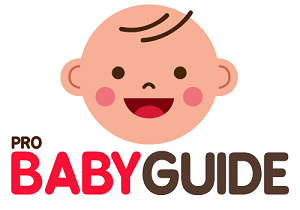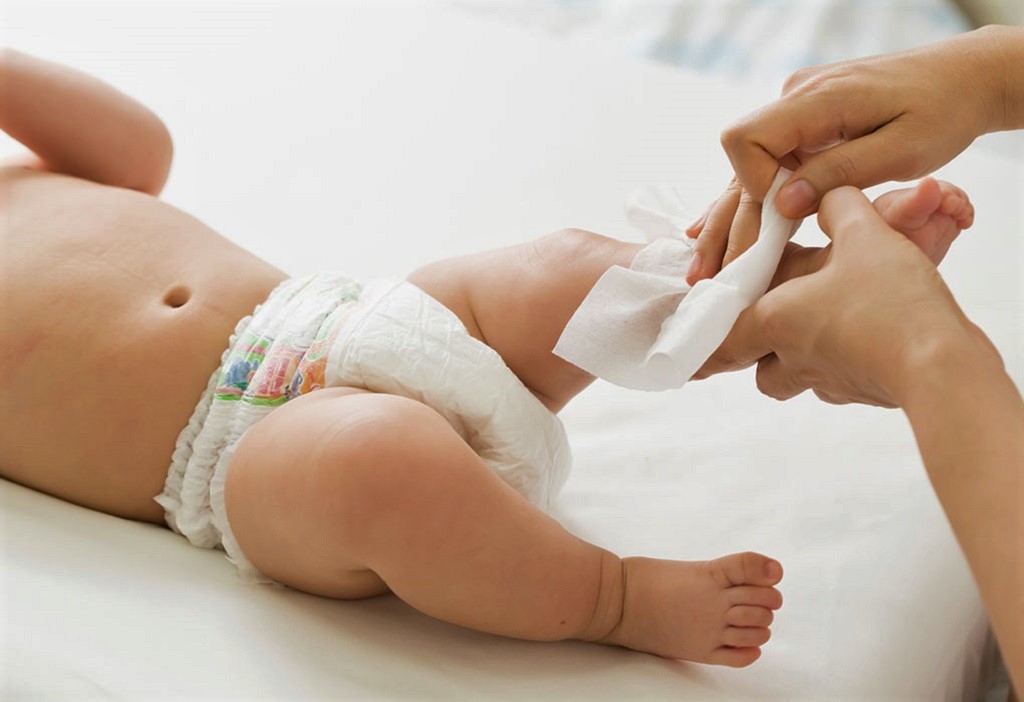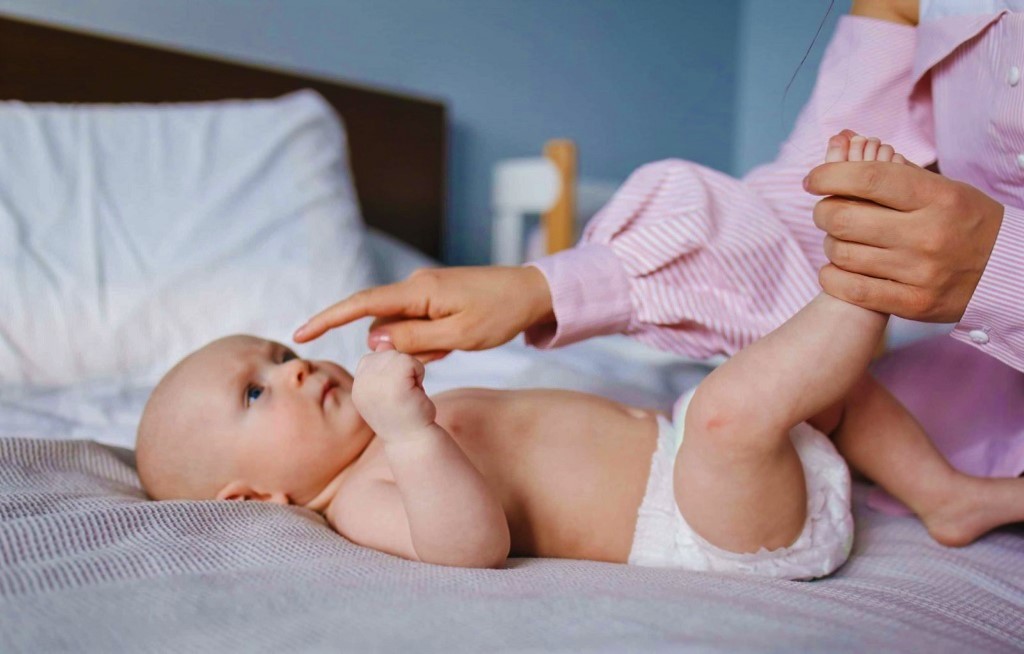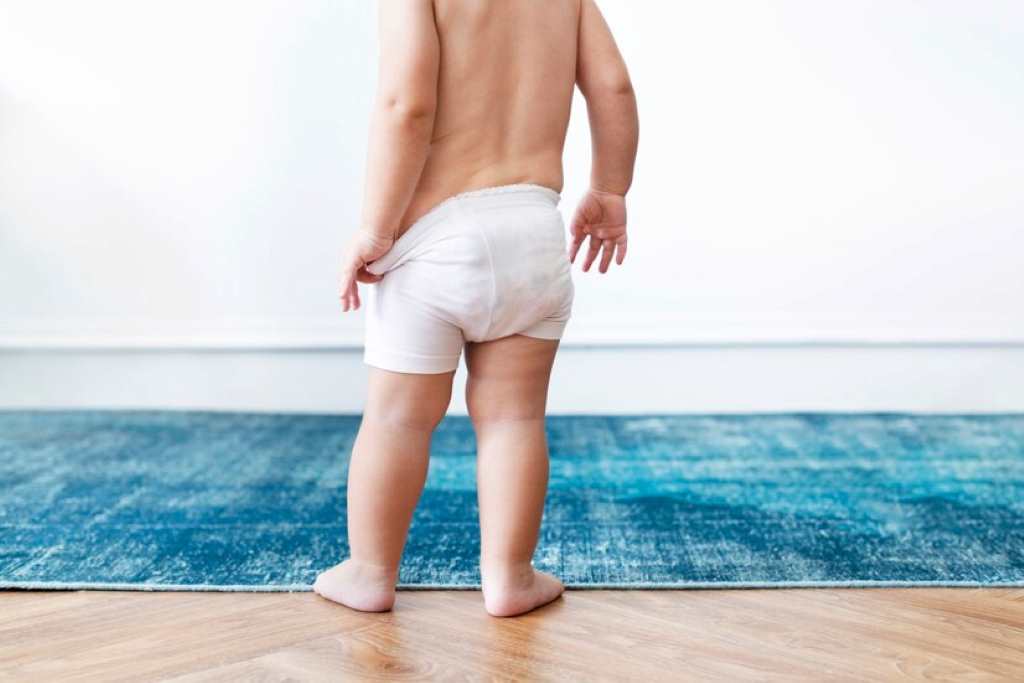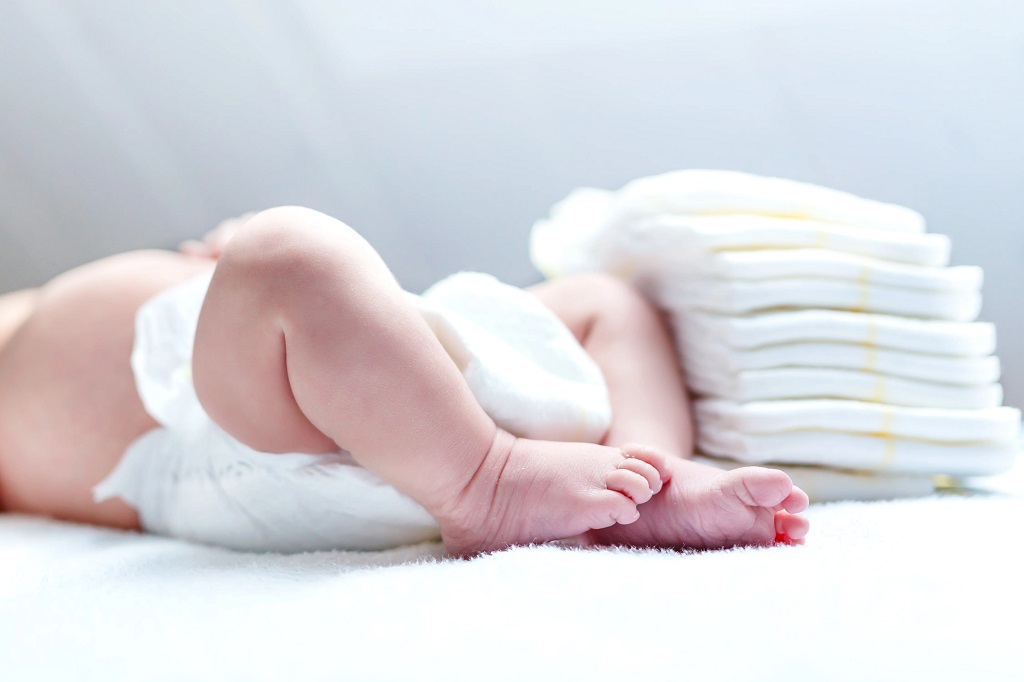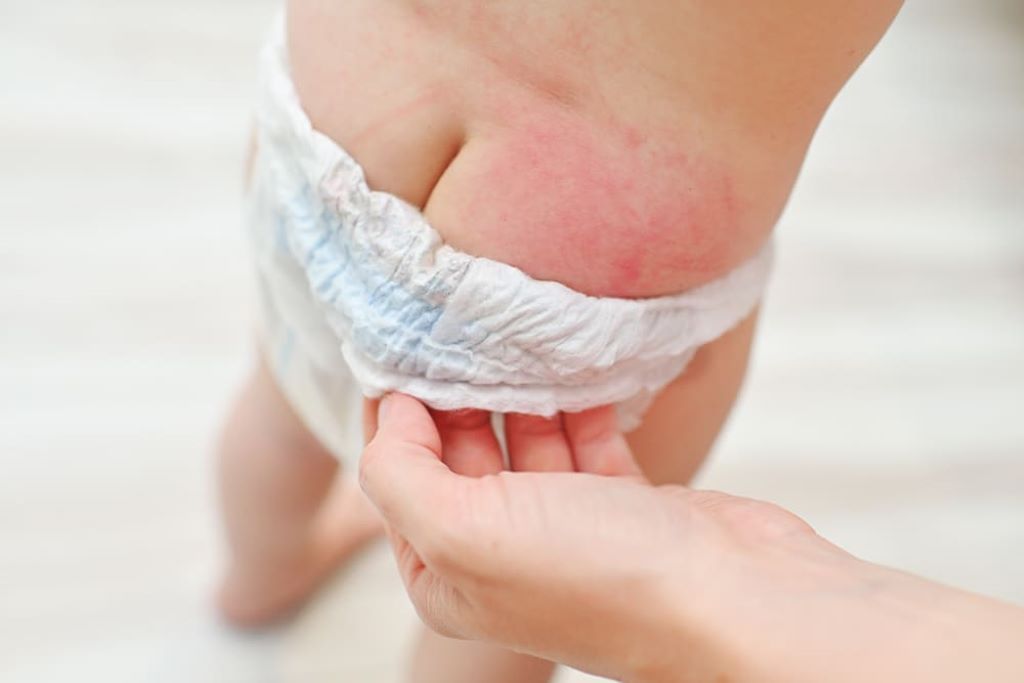Ah, the joys of parenthood – the giggles, the cuddles, and yes, the occasional poopy diaper! If you’re a new parent or a seasoned pro, you’ve likely wondered about the delicate balance between tending to your little one’s needs and finding a moment to catch your breath. The question lingers: how long can a baby stay in a poopy diaper before it becomes a cause for concern? Fret not, for we’re here to navigate the murky waters of diaper dilemmas and provide some much-needed clarity. From newborns to curious crawlers, we’ll explore the diaper change frequency chart to keep your precious bundle happy and healthy. So, let’s dive in – curiosity awaits, and action beckons!
Diaper Change Frequency Chart
Here is a diaper change frequency chart:
| Age | Diaper Change Frequency |
| Newborn (0-3 months) | Every 2-3 hours, or more often if wet or soiled |
| 3-6 months | Every 3-4 hours, or more often if wet or soiled |
| 6-12 months | Every 4-5 hours, or more often if wet or soiled |
| 12-18 months | Every 5-6 hours, or more often if wet or soiled |
| 18-24 months | Every 6-7 hours, or more often if wet or soiled |
Note: These are just general guidelines, and the frequency of diaper changes may vary depending on your baby’s needs. For example, some babies may need to be changed more often if they are heavy wetters or have frequent bowel movements.
Importance of Diaper Changing
Changing diapers is not just about keeping your baby clean; it’s also vital for their overall well-being. Prolonged exposure to urine and feces can lead to diaper rash, a common skin irritation that affects babies. Regular diaper changes help prevent discomfort and keep your baby’s skin healthy.
Here are some of the reasons why diaper changing is so important:
- To prevent diaper rash. Diaper rash is a common skin irritation when a baby’s skin is exposed to moisture for too long. Frequent diaper changes help keep the baby’s skin dry and moisture-free, which can help prevent diaper rash.
- To prevent infections. Bacteria can grow in a soiled diaper, which can lead to infections. Frequent diaper changes help to reduce the risk of infections by removing the bacteria from the diaper.
- To keep the baby comfortable. A wet or soiled diaper can make a baby feel uncomfortable. Frequent diaper changes help to keep the baby’s skin clean and dry, which can help them feel more comfortable.
- To promote bonding. Diaper changing can be a great opportunity to bond with your baby. It’s when you can talk to your baby, sing to them, and make them feel loved and cared for.
Understanding Diaper Rash
Diaper rash is a common concern for parents, and various factors can cause it. The prolonged exposure to moisture and chemicals in urine and feces can irritate the baby’s delicate skin. Certain foods, medications, and skin sensitivities can also contribute to diaper rash.
Causes of Diaper Rash
Some common causes of diaper rash include:
- Irritation: This is the most common cause of diaper rash. It happens when a baby’s skin is exposed to wetness or moisture for too long. The urine and stool in a diaper can break down the natural oils in the skin, leaving it red, irritated, and inflamed.
- Chafing: This can happen when a diaper is too tight or when a baby’s skin rubs against the diaper or clothing. Chafing can cause the skin to become red, sore, and cracked.
- Allergies: Some babies are allergic to ingredients in diapers, wipes, or other products that come into contact with their skin. This can cause a rash that looks similar to irritation or chafing.
- Yeast infection: A yeast infection can also cause diaper rash. Yeast is a fungus that can grow in warm, moist environments. If a baby has a yeast infection, the diaper rash is usually red, bumpy, and has a white discharge.
- Bacterial infection: A bacterial infection is less common than a yeast infection but can still cause diaper rash. Bacterial infections usually look like red, angry bumps that may be painful.
Signs of Diaper Rash
Diaper rash can manifest as red, inflamed skin in the diaper area. In severe cases, it may cause blisters or sores. If you notice any signs of diaper rash, you must take prompt action to alleviate your baby’s discomfort.
- Redness: The most obvious sign of diaper rash is redness in the diaper area. The skin may be bright red, or it may be a more dull red.
- Bumps: Sometimes, diaper rash can cause small bumps on the skin. These bumps can be red, or they can be white.
- Soreness: Diaper rash can also make the skin sore. Your baby may cry when you change their diaper, or they may be fussy and irritable.
- Scaling: Sometimes, diaper rash can cause the skin to scale. This means that the skin will peel off in small pieces.
- Weeping: If the diaper rash is severe, it may start to weep. This means that fluid will leak out of the rash.
- Fever: In rare cases, diaper rash can cause a fever. If your baby has a fever, you should see a doctor.
Prolonged Diaper Use: Is it Safe?
While timely diaper changes are crucial, many parents wonder if leaving a baby in a poopy diaper for a short period is safe. It’s best to avoid prolonged diaper use, as it can lead to various issues.
Baby Skin Irritation and Discomfort
Leaving a baby in a poopy diaper for an extended time can cause skin irritation and discomfort. The moisture and chemicals in the waste can break down the skin’s protective barrier, making it susceptible to irritation and rashes.
Baby Diaper Allergy and Dermatitis
Some babies may be allergic to certain diaper materials or chemicals, leading to diaper dermatitis. Regular diaper changes can help reduce the risk of allergic reactions and keep your baby’s skin healthy.
Tips for Effective Diaper Changing Routine
Establishing a proper diaper-changing routine can significantly impact your baby’s comfort and hygiene. Here are some tips to consider:
- Always wash your hands before and after changing diapers to maintain hygiene.
- Keep all the necessary supplies, such as clean diapers, wipes, and diaper cream, within reach.
- Use gentle wipes or damp cloths to clean your baby’s bottom, avoiding harsh chemicals.
- Allow your baby’s skin to air dry before wearing a fresh diaper.
- Ensure the diaper fits snugly but not too tight to prevent leakage.
How Often Should You Change Your Baby’s Diaper?
The answer depends on a few factors, including your baby’s age, how often they wet or poop, and their skin sensitivity.
In general, you should change your baby’s diaper every 2-3 hours. This is especially important for newborns, who tend to go through diapers more quickly. If your baby poops, you should change their diaper immediately. Even if the poop is just a little bit, it can irritate their skin if left sitting for too long.
As your baby gets older, you may be able to stretch out the time between diaper changes. But it’s still a good idea to check their diaper every few hours to be sure. And if your baby is starting to crawl or walk, you’ll probably need to change their diaper more often since they’re more likely to get it dirty.
Here are a few other things to keep in mind when changing your baby’s diaper:
- If your baby’s skin is sensitive, you may want to use fragrance-free diaper cream to help prevent diaper rash.
- If your baby is a girl, wipe from front to back to avoid spreading bacteria.
- If your baby is a boy, clean under the foreskin.
- After you’ve changed your baby’s diaper, be sure to dispose of the dirty diaper properly.
Changing your baby’s diaper can be a bit of a hassle, but it’s an important part of keeping them clean and healthy. So don’t forget to check their diaper regularly and change it as needed.
Best Diapers for Babies: Choosing the Right One
When caring for your precious little one, providing them with the best diapers is a top priority. The right diaper keeps your baby comfortable, dry, and happy, ensuring their overall well-being. Here, we present the top 5 diapers that have gained popularity among parents for their exceptional performance and features.
1. Pampers Swaddlers, Newborn Model
The Pampers Swaddlers in the Newborn model are specially designed to provide unbeatable comfort and protection for your newborn baby. They feature a unique wetness indicator that changes color when it’s time for a diaper change, making it easier for parents to keep their baby dry.
Full Features:
- Soft and hypoallergenic materials that are gentle on your baby’s delicate skin.
- Absorb Away Liner that pulls wetness and mess away from your baby’s skin.
- Contoured design with adjustable fasteners for a secure fit.
- Umbilical cord notch to protect your baby’s sensitive belly button area.
Warranty & Service: Pampers offers a satisfaction guarantee for their Swaddlers diapers. If you’re unsatisfied with the product, they will assist you with a replacement or refund.
Other Users’ Opinions: Parents love the Pampers Swaddlers for their softness and excellent leak protection. Many users appreciate the wetness indicator, which makes it convenient to know when it’s time for a change.
Pros:
- Wetness indicator
- Soft and gentle on baby’s skin
- Great leak protection
Cons:
- Slightly higher price compared to other brands
2. Huggies Little Snugglers, Size 1
Huggies Little Snugglers are designed to pamper your baby with ultimate comfort. The Size 1 diapers are perfect for newborns up to 14 lbs. They offer a snug fit and keep your baby’s skin dry, minimizing any chances of rashes.
Full Features:
- Gentle Absorb Liner provides a cushiony layer of protection between your baby’s skin and the mess.
- Wetness indicator to signal when a diaper change is needed.
- Breathable outer cover to promote good air circulation.
- Pocketed-back waistband for added leakage protection.
Warranty & Service: Huggies stands by the quality of their Little Snugglers diapers. They offer a customer satisfaction program that ensures you are happy with your purchase.
Other Users’ Opinions: Parents praise Huggies Little Snugglers for their excellent fit and comfort. The wetness indicator is highly appreciated as it helps in avoiding unnecessary changes.
Pros:
- Soft and comfortable fit
- Reliable leak protection
- Wetness indicator
Cons:
- Some users find the sizing a bit small for larger babies
3. Luvs Ultra Leakguards, Size 3
Luvs Ultra Leakguards in Size 3 are perfect for active babies needing extra room to move. These diapers offer outstanding leakage protection, keeping your baby dry and happy, no matter how much they wiggle and crawl.
Full Features:
- NightLock Plus feature for extra absorbency during the night.
- Leak Barrier Leg Gathers to prevent leaks from the sides.
- Bear Hug Stretch Tabs for a secure and flexible fit.
- Cottony soft materials that feel gentle on the skin.
Warranty & Service: Luvs is committed to providing quality products. They offer a money-back guarantee if you encounter issues with their Ultra Leakguards diapers.
Other Users’ Opinions: Parents who have used Luvs Ultra Leakguards commend the diaper’s leak protection and affordability. Many users find them perfect for active toddlers.
Pros:
- Excellent leakage protection
- Affordable pricing
- Comfortable fit for active babies
Cons:
- Some parents prefer softer materials for babies with sensitive skin
4. Honest Company Diapers, Pandas Print
The Honest Company Diapers boast a delightful pandas print while being environmentally friendly. They are perfect for parents who prioritize using natural, plant-based materials for their baby’s diapers.
Full Features:
- Plant-derived core liner for excellent absorption.
- Free from harmful chemicals, lotions, and fragrances.
- Super-soft inner and outer layers for maximum comfort.
- The adorable pandas print adds a touch of style.
Warranty & Service: The Honest Company takes pride in its products’ quality and environmental consciousness. They have a customer support team that ensures customer satisfaction.
Other Users’ Opinions: Parents love the eco-friendly aspect of Honest Company Diapers and appreciate the stylish designs. The diapers are also reported to be gentle on the baby’s skin.
Pros:
- Environmentally friendly materials
- No harmful chemicals
- Cute and stylish prints
Cons:
- Slightly higher cost compared to conventional diapers
5. Seventh Generation Free & Clear, Size 4
Seventh Generation Free & Clear diapers are an excellent choice for parents who want to make an eco-conscious decision. These diapers are designed for toddlers in Size 4 and provide comfort and peace of mind.
Full Features:
- FSC Certified diaper (from responsibly managed forests).
- No chlorine bleaching, lotions, or fragrances.
- Core made with sustainably sourced fluff pulp.
- Comfortable and soft fit for active toddlers.
Warranty & Service: Seventh Generation believes in the quality and sustainability of its products. They offer a money-back guarantee for those who are not satisfied.
Other Users’ Opinions: Parents who are environmentally conscious appreciate Seventh Generation’s commitment to sustainability. The diapers are also praised for their gentle materials.
Pros:
- Eco-friendly and sustainable
- Soft and comfortable fit
- Free from harmful chemicals
Cons:
- Some users find them less absorbent compared to conventional diapers
Newborn Diaper Care: Keeping Your Baby Comfortable
Newborns have incredibly delicate and sensitive skin that requires special attention and care. The skin of a newborn is thinner and more permeable than that of older babies and children, making it susceptible to irritation and rashes. As a result, it’s crucial to choose diapers that are gentle on your baby’s skin and minimize potential irritants.
The Importance of Breathable Diapers
Breathable diapers are a game-changer when it comes to newborn diaper care. These diapers are designed to allow air to circulate freely, reducing the risk of diaper rash and discomfort. The enhanced breathability helps maintain the skin’s natural moisture balance and keeps your baby fresh and comfortable throughout the day.
Selecting the Right Diaper Size
Ensuring a proper fit is essential for maximizing comfort and preventing leaks. Too-tight diapers can leave red marks on your baby’s skin and cause discomfort, while too loose can lead to leakage issues. It’s crucial to choose the appropriate diaper size that snugly fits your baby’s waist and legs without being too restrictive.
Absorbency Matters
Newborns can go through multiple diaper changes in a single day, and that’s where the importance of diaper absorbency comes into play. Opt for high-quality diapers that offer excellent absorption, keeping your baby’s delicate skin dry and free from irritation. A dry baby is a happy baby!
Changing Diapers Regularly
To maintain optimal comfort and hygiene for your baby, changing diapers is essential. Leaving a wet or soiled diaper on your baby for an extended period can lead to diaper rash and discomfort. Make it a habit to check the diaper frequently and change it promptly when necessary.
Diapering Techniques for New Parents
Diapering might seem daunting for new parents at first, but with a little practice and guidance, you’ll become a pro in no time. Here are some helpful diapering techniques to make the process smoother:
1. Gather Supplies
Before you begin, ensure you have all the necessary diapering supplies within reach. This includes clean diapers, baby wipes, diaper rash cream, and a changing pad or cloth.
2. Create a Safe Zone
Choose a clean and flat surface for diaper changes. A changing table, changing pad, or even a towel on the bed can be a safe and comfortable spot for your baby.
3. Wash Your Hands
Always wash your hands thoroughly with soap and water before and after diaper changes. This helps maintain proper hygiene and minimizes the risk of infection.
4. Proper Wiping Technique
When using baby wipes, wipe gently from front to back. This helps prevent any potential contamination from reaching sensitive areas.
5. Air Time
Allowing your baby to have some diaper-free time can benefit their skin. Lay a soft cloth or towel underneath your baby and let them kick and wiggle freely for a little while each day.
How Long Can a Newborn Sit in a Poopy Diaper
As a new parent, you’re probably wondering how long it’s safe to leave your newborn in a poopy diaper. The answer is, not very long.
Newborns have very sensitive skin, and sitting in a poopy diaper can cause diaper rash. Diaper rash is a red, irritated rash that can be caused by a number of things, including wetness, poop, and friction. It can be very uncomfortable for your baby, and it can even lead to infection.
So, how long is too long? The general rule of thumb is to change your baby’s diaper every two to three hours, or as soon as you notice it’s dirty. If your baby has just pooped, you should change their diaper right away. The longer they sit in a poopy diaper, the more likely they are to get diaper rash.
Of course, there are times when you may not be able to change your baby’s diaper right away. If you’re out and about, or if your baby is sleeping, you may have to wait a little longer. But try to change their diaper as soon as possible.
Preventing Diaper Rash: Do’s and Don’ts
Prevention is key when it comes to diaper rash. Follow these do’s and don’ts to minimize the risk of diaper rash:
| Do’s | Don’ts |
| Change diapers frequently, at least every 2-3 hours, or as soon as it’s soiled. | Don’t leave a wet or soiled diaper on for too long. |
| Clean the diaper area gently with each diaper change using mild, unscented wipes or warm water and a soft cloth. | Don’t use harsh soaps, scented wipes, or strong chemicals on the baby’s skin. |
| Allow the baby’s skin to air dry before putting on a new diaper. | Don’t rub the baby’s skin too harshly while cleaning. Pat it dry gently. |
| Apply a thin layer of baby-friendly diaper rash cream or ointment with each diaper change. | Don’t apply multiple products at the same time, as it may cause irritation. |
| Use diapers that fit well and are breathable, such as cloth diapers or high-quality disposable diapers. | Don’t use diapers that are too tight or made of materials that don’t allow proper airflow. |
| Give the baby some diaper-free time to let their skin breathe, especially after a diaper change. | Don’t overdress the baby, as excessive heat and sweating can worsen diaper rash. |
| Wash cloth diapers separately using a gentle, fragrance-free detergent, and rinse them thoroughly. | Don’t use fabric softeners or dryer sheets on cloth diapers, as they can irritate the skin. |
| Maintain good hygiene, washing hands before and after each diaper change. | Don’t neglect cleaning your hands, as it can transfer harmful bacteria to the baby’s skin. |
| Check for signs of diaper rash regularly, such as redness, irritation, or bumps, and take prompt action if you notice any. | Don’t ignore diaper rash; early treatment can prevent it from worsening. |
| Consult a pediatrician if the diaper rash persists or gets severe, as they can provide appropriate guidance and treatment. | Don’t use any over-the-counter creams or home remedies without consulting a healthcare professional. |
Diaper Rash Natural Remedies
In case your baby does develop a diaper rash, there are several remedies and treatments available. Using diaper rash creams with zinc oxide can soothe the affected area and promote healing.
- Aloe vera gel: Aloe vera is a natural anti-inflammatory and moisturizer that can help soothe and heal irritated skin. Apply a thin layer of aloe vera gel to the affected area several times a day.
- Baking soda baths: Baking soda is a natural antiseptic that can help reduce inflammation and itching. Add 1/2 cup of baking soda to a warm bath and let your baby soak for 10-15 minutes.
- Breast milk: Breast milk has natural antibacterial and antifungal properties that can help protect your baby’s skin from infection. Apply a small amount of breast milk to the affected area and let it air dry.
- Calendula cream: Calendula is a herb that has been used for centuries to treat skin conditions. It is a natural anti-inflammatory and antiseptic that can help soothe and heal diaper rash.
- Witch hazel: Witch hazel is a natural astringent that can help dry out the affected area and relieve itching. Apply a small amount of witch hazel to a cotton ball and gently wipe the affected area.
- Coconut oil: Coconut oil is a natural moisturizer that can help keep your baby’s skin hydrated and protected. Apply a thin layer of coconut oil to the affected area several times a day.
Also, diaper rash creams containing zinc oxide help create a protective barrier on the skin, preventing further irritation. Apply a generous amount of cream during each diaper change to keep your baby’s skin protected.
Conclusion
As parents, we all face the dreaded poopy diaper situation at some point. You may wonder, “Just how long can a baby stay in a poopy diaper before it becomes a problem?” It’s a valid concern and one that we should address with urgency and awareness.
Let’s be real—the thought of your little one sitting in their mess is not a pleasant one. Not only does it cause discomfort, but it can also lead to potential health issues. How long can a baby sit in poop without consequences? Well, the truth is, how long a newborn can stay in a poopy diaper varies. But why take chances?
Ensuring a consistent and frequent diaper-changing routine is essential. A diaper change frequency chart can be a helpful guideline, but remember that every baby is unique. Pay attention to cues, agitation, or skin irritation to identify when it’s time to change.
As parents, we have the power to keep our little ones comfortable and healthy. So let’s be proactive and keep those poopy problems at bay. Happy changing!
FAQs
How can I tell if my baby has a diaper rash?
Look for signs of red, inflamed skin in the diaper area. If you notice any discomfort or persistent redness, it may be a diaper rash.
Are cloth diapers better for preventing diaper rash?
Cloth diapers allow better airflow, reducing the risk of diaper rash. However, proper cleaning and changing are equally important.
Can I use baby powder to prevent diaper rash?
It’s best to avoid using baby powder, as it can irritate your baby’s lungs if inhaled. Stick to diaper rash creams with zinc oxide instead.
Should I apply diaper cream at every diaper change?
Applying diaper cream at every diaper change can be beneficial, especially if your baby is prone to diaper rash.
When should I consult a pediatrician about diaper rash?
If the diaper rash persists or worsens despite home remedies, consult your pediatrician for further evaluation and treatment.
